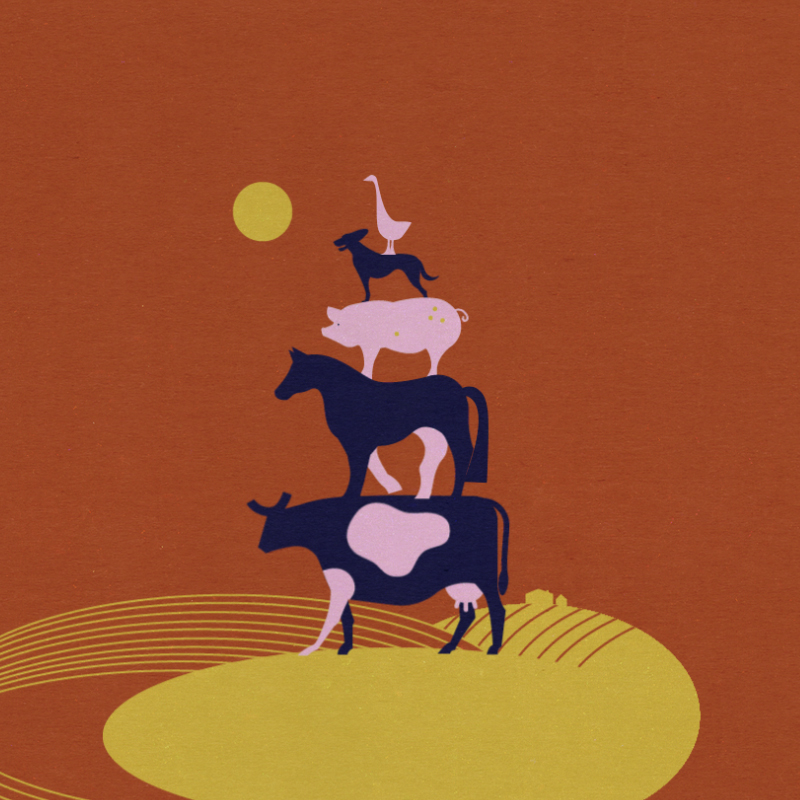The Most Popular Lithuanian Domestic Animals
> BACK TO 100 STORIESListen to this text (Lithuanian):
Traditionally, animals are divided into wild animals, which live independently in nature, and domestic animals, which are bred by humans for their own needs. For a long time, Lithuania was a purely agricultural country, so most animals were bred for food or farmwork.
The animal with the longest history of domestication in Lithuania is the pig which has been kept for 3.000 years. Pigs were first mentioned in written sources in 1381. Local short-eared pigs were raised in Lithuania until the nineteenth century. They are not picky eaters, kept loose during the warm season, grazing in fields and forests, they can find food on their own. Pigs are still raised in Lithuanian villages today. Many Lithuanians cannot imagine a festive or everyday table without pork dishes.
For a long time, the horse was the most loyal helper and companion of Lithuanians: young men rode horses to fight in wars or visit girls, families traveled in horse-drawn carriages, and the land was cultivated with the help of horses. The oldest and most famous Lithuanian breed of horses is the Žemaitukas [Eng. little Samogitian]. Žemaitukai were first mentioned in written sources 700 years ago.
In the Middle Ages, Žemaitukai were thought to be the best fighting horse breed in the world. They were the main Lithuanian war horses in the battles with the Crusaders and the Mongols. The modern breed of Žemaitukai was restored in 1958 at Vilnius stables from a stallion called Eagle who was found in Samogitia and was almost taken away by the retreating Germans at the end of World War II. Žemaitukai are classified as ponies: they are not tall (128–142 cm) and weigh 360–420 kg. For comparison, the heavy horses bred in Lithuania at the end of the nineteenth century weigh almost twice as much (600–700 kg), and they reach 160 cm in height. By the way, the height of a horse is not measured from the head to the ground as for a human, but from the ground to where the neck joins the back. That point is called the withers.
The horse was a companion and helper on the Lithuanian farm, and the cow was a source of food. The loss of a cow meant starvation for our ancestors, because most everyday meals were made using dairy products: butter, buttermilk, sour cream, curd. Cows in Lithuania are sorted by dominant colours into black-and-white (bred in the southern, western and central part of the country) and brown (most popular in the northern and north-eastern part). Both black-and-white and brown cattle started to be bred in Lithuania at the turn of the twentieth century.
Geese have been raised in Lithuania since the sixteenth century. They are often referred to as travelers in Lithuanian folklore and in fairy tales. Lithuanian geese mostly traveled at the end of the nineteenth century – they were sold to foreign countries. For example, geese raised in the Užnemunė region were taken to East Prussia for sale in the autumn.
Lithuanians also bred dogs. The ancestors of Lithuanian hounds were brought from Asia Minor by the knights in the early Middle Ages during the Crusades. Lithuanian hounds are now bred and raised mainly by hunters.

